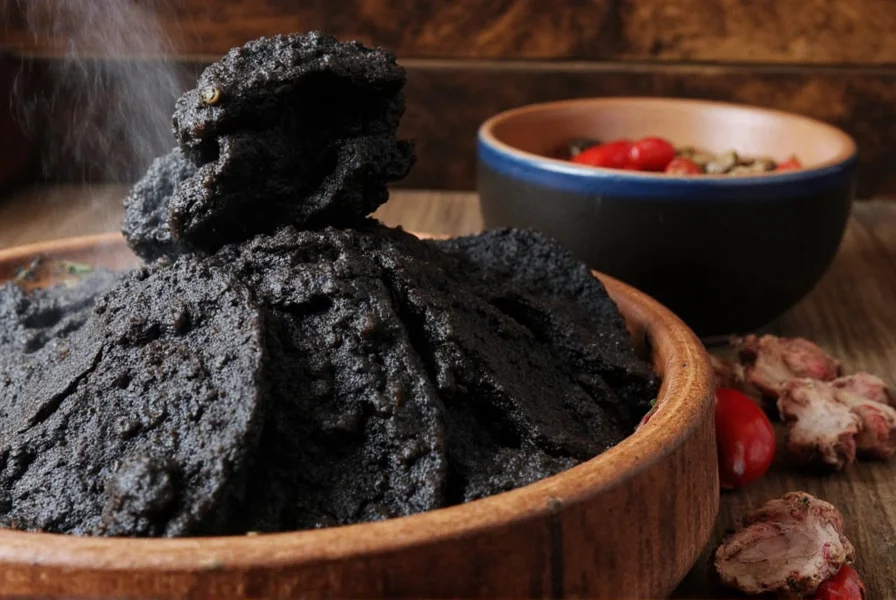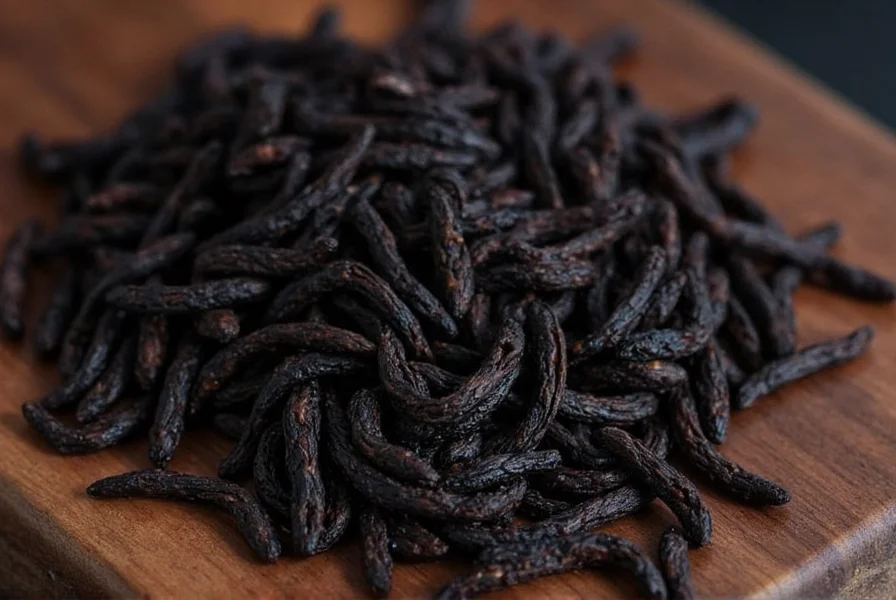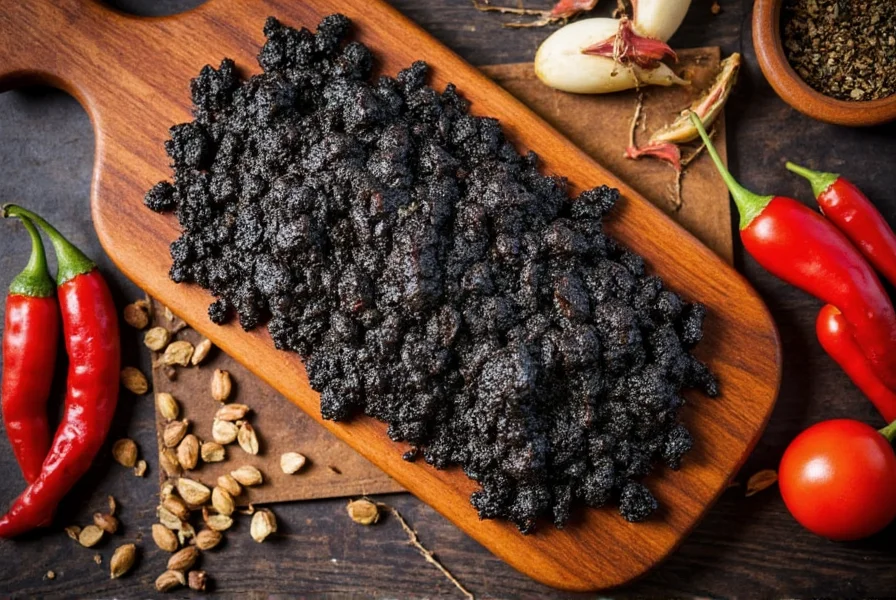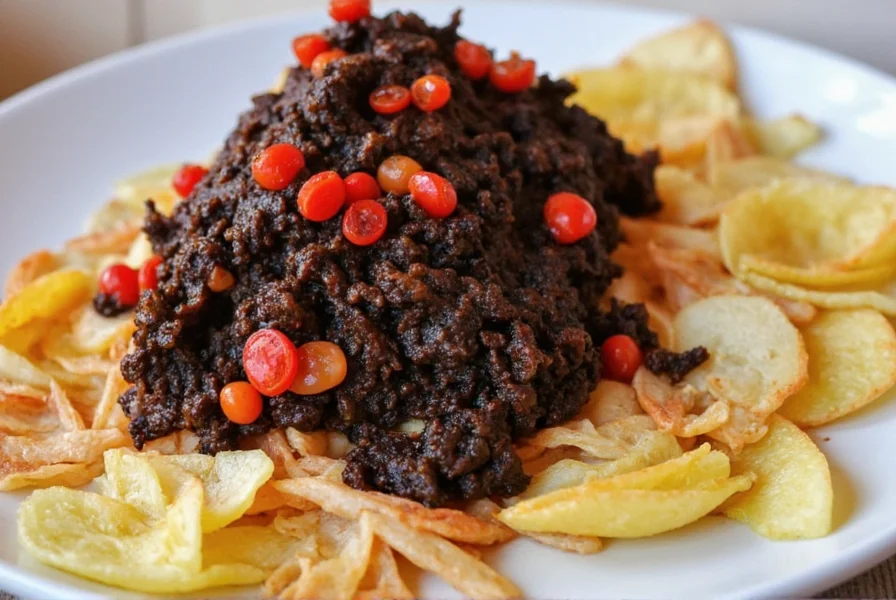Table of Contents
Introduction to Black Sesame
If you're a spice enthusiast or a professional in the culinary world, you've probably heard of black pepper, cumin, or even paprika. But have you ever come across something as mysterious and intriguing as black sesame? This unique ingredient is often overlooked but holds incredible flavor potential and versatility.

Black sesame seeds are the dark-hued variety of sesame seeds, native to Asia and widely used in traditional and modern cuisine. Unlike white sesame seeds, they retain their outer hull, giving them a richer, nuttier flavor and higher nutrient content. Their distinctive appearance and health benefits make them a valuable addition to any kitchen.
What Is Black Sesame?
Black sesame seeds (Sesamum indicum) are the unprocessed seeds of the sesame plant, distinguished by their dark color and higher antioxidant content compared to white sesame seeds. Unlike salt-based products, black sesame is a seed that's been cultivated for thousands of years, particularly in Asian cuisines.

These seeds are rich in essential nutrients including calcium, iron, magnesium, and healthy fats. They're commonly used in both sweet and savory dishes, from sesame paste (tahini) to traditional desserts like black sesame soup. Their nutty flavor and crunchy texture make them versatile in cooking.
Flavor Profile and Uses
Black sesame seeds have a distinct nutty, earthy flavor with subtle roasted notes. When toasted, their aroma intensifies, making them ideal for enhancing both savory and sweet dishes. Unlike salt-based seasonings, black sesame adds depth without increasing sodium content.

Here are some popular uses for black sesame:
- Savory dishes: Sprinkle over stir-fries, rice bowls, or roasted vegetables for added texture and flavor.
- Desserts: Use in black sesame ice cream, mochi, or cookies for a rich, nutty taste.
- Sauces and dressings: Blend into tahini-based sauces or salad dressings for a deeper flavor profile.
- Breakfast: Mix into oatmeal, yogurt, or smoothie bowls for a nutrient boost.
Their versatility extends to both raw and toasted applications, with toasting enhancing their natural oils and aroma.
Practical Tips for Using Black Sesame
Whether you're a seasoned chef or just starting out, here are some tips to help you make the most of black sesame:
Tip 1: Toast for Maximum Flavor
Lightly toast black sesame seeds in a dry pan for 2-3 minutes until fragrant. This enhances their nutty aroma and makes them ideal for garnishing dishes.

Tip 2: Pair with Complementary Ingredients
Black sesame pairs exceptionally well with ingredients like honey, ginger, soy sauce, and coconut. Try it in combination with these for balanced flavors in both sweet and savory dishes.
Tip 3: Use in Baking
Ground black sesame makes a fantastic addition to baked goods. Mix it into bread dough, muffin batter, or use as a coating for cakes and pastries.
Tip 4: Store Properly
Keep black sesame seeds in an airtight container in a cool, dark place. For longer storage, refrigerate to preserve freshness and prevent rancidity.
Buying Guide: How to Choose the Best Black Sesame
When selecting black sesame seeds, consider these key factors to ensure quality and freshness:
| Feature | Importance | Recommendation |
|---|---|---|
| Origin | High | Look for seeds from reputable Asian producers (e.g., Japan, Korea, or China) for authentic quality. |
| Appearance | Medium | Seeds should be uniformly black with no discoloration or mold spots. |
| Texture | Medium | Whole seeds should be firm and intact; avoid broken or crushed seeds. |
| Packaging | High | Choose vacuum-sealed or opaque containers to protect from light and moisture. |
| Brand Reputation | High | Opt for brands with positive reviews and certifications like organic or non-GMO. |
| Price | Low | Affordable but not excessively cheap—quality matters for freshness and flavor. |
Some recommended products include:
- Organic Black Sesame Seeds: Ideal for health-conscious cooks. Features: Certified organic, non-GMO, rich in antioxidants.
- Japanese Black Sesame: Known for superior flavor and texture. Features: Small-batch roasted, perfect for traditional Japanese dishes.
- Black Sesame Paste: Ready-to-use for desserts and sauces. Features: Smooth consistency, made from premium seeds with no additives.
When choosing black sesame, consider how you'll use it. For garnishing, whole seeds work best. For sauces or baking, ground sesame powder provides a smoother texture.

Frequently Asked Questions
Is black sesame the same as black sesame seeds?
Yes, "black sesame" and "black sesame seeds" refer to the same ingredient. The term "black sesame" is commonly used to describe the whole seeds, which are the dark-hued variety of sesame seeds.
What makes black sesame different from white sesame?
Black sesame seeds retain their outer hull, giving them a richer, nuttier flavor and higher nutrient content compared to white sesame seeds, which have had their hulls removed. Black sesame also contains more antioxidants and minerals like calcium and iron.
Can I use black sesame as a substitute for white sesame?
Yes, but with adjustments. Black sesame has a stronger flavor, so you may want to use slightly less than white sesame. It works best in recipes where its dark color and robust taste are desired, like in desserts or sauces.
How should I store black sesame to maintain freshness?
Store black sesame seeds in an airtight container in a cool, dark place. For longer storage (over 3 months), refrigerate or freeze to prevent rancidity. Toasted sesame seeds should be stored in the refrigerator to maintain freshness.
Is black sesame good for health?
Yes! Black sesame seeds are rich in antioxidants, calcium, iron, and healthy fats. They support bone health, improve digestion, and may help reduce inflammation. Traditional medicine also uses them for hair and skin health.
Why does black sesame have a darker color?
The dark color comes from anthocyanins, natural pigments found in the seed's outer hull. These compounds are also responsible for the seeds' higher antioxidant content compared to white sesame seeds.
Can I grow black sesame at home?
Yes, but it requires specific conditions. Black sesame plants thrive in warm climates with well-drained soil and plenty of sunlight. They're typically grown in tropical and subtropical regions, so home cultivation may be challenging in cooler climates.
Conclusion
Black sesame seeds are more than just a culinary ingredient—they're a nutrient-dense superfood with a rich history in traditional medicine and modern cooking. Whether you're looking to enhance your dishes with their nutty flavor or boost your diet with essential minerals, black sesame offers endless possibilities.
From its vibrant color to its health benefits, black sesame stands out as a versatile and valuable addition to any kitchen. So next time you're cooking, consider adding a sprinkle of black sesame to unlock its full potential and bring a touch of authenticity to your meals.
Remember, the key to enjoying black sesame is to use it wisely and creatively. With a little experimentation, you can discover new ways to incorporate this incredible seed into your favorite recipes.











 浙公网安备
33010002000092号
浙公网安备
33010002000092号 浙B2-20120091-4
浙B2-20120091-4